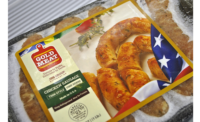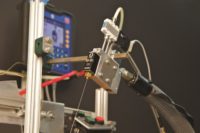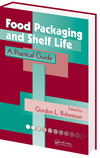Labels & Labeling: Hot Melt Adhesives
Why You Should Consider Using a Rubber-Based, Hot-Melt Adhesive




It’s now more important than ever to have a wide understanding of the labels and labeling processes. For a long time, acrylic emulsion adhesives dominated the landscape of applications for pressure-sensitive labels, and packaging decision makers may not even question anymore whether acrylic adhesives are right for the job. But due to improvements in rubber-based adhesives (sometimes referred to as “hot melt” or “100 percent solids” adhesives), asking too few questions could mean overlooking some very compelling options for labeling applications these days.
To ensure you end up with an adhesive that best suits your needs, it is important to understand the properties of available adhesives, including how they work, which applications they are most suited for and how they are applied. To help you get started, let’s take a quick look at hot melt adhesives, specifically, so you can determine whether the right adhesive for your label application may have been eluding you.
What are hot-melt adhesives?
Whether you call it hot melt, rubber-based, or a 100 percent solids adhesive, the topic of this article gets its various names from the adhesive composition and the process used to apply the adhesive to a substrate. Hot melts are typically rubber-derived and start in solid form before processing. During coating, this solid, rubber-based product is melted down through the application of intense heat before it is applied to a silicone-cured liner and then transferred to a substrate. Unlike solvent or emulsion coating processes, no other dispersing agents are required – only hot-melt adhesives are eventually coated onto a facestock, leading to a variety of advantages over other adhesive coating options:
- No hazardous waste
- Low outgassing and volatile organic chemical (VOC) emissions
- Low energy consumption during coating
Besides processing benefits, hot-melt adhesives can offer compelling performance capabilities that make them a great choice in certain applications as well:
- Quick, high tack: Hot melts grab quickly for ease of processing and reliable positioning.
- Secure, lasting adhesion: Hot melts are ideal for when you need a label to go on and stay on.
- Strong bonding to low surface energy materials: Hot melts stick on difficult surfaces.
- Ability to be formulated for superior clarity: Hot melts can be formulated to be nearly invisible on packaging.
- Usability across a wide temperature range: Hot melts can work well in both warm and cold temperatures.
- Water resistance/non-water whitening properties: Hot melts can stand up to dampness, maintaining both adhesive integrity and aesthetic appeal.
- Direct food contact compliant: Hot melts have the possibility for FDA approval for direct food contact due to lack of residual solvent, chemicals or emulsifying agents.
When should a hot-melt adhesive be used?
There is no such thing as an adhesive that is universally “the best” in all applications – characteristics of each application denote which adhesive type will work best, such as what substrate the adhesive will be sticking to. Hot-melt adhesives are good for use with textured surfaces, for instance, because they flow well across substrates to fill crevices for a firm bond. Generally speaking, hot melts stick well to low-surface energy materials, too, such as the plastics used in bottles or horticultural packaging.
Knowing as many specifics as possible about the surface with which an adhesive will be used is important. In the case of plastics, for instance, finding out the specific polymer type that composes a substrate is important when seeking the right adhesive. Know also whether a surface is coated or chemically treated – for instance, hot-melt adhesives tend to stick better to untreated plastic containers than other adhesives might, but treatment or coating of a surface can affect which adhesive type works best.
What Else Affects Adhesive Choice?
Beyond surface material considerations, the entire lifecycle of the label, from converting to environmental resistance and durability, must be considered. The dimensional properties of the surface to which a label will be applied should first be factored in – is it flat, curved or otherwise angled? An adhesive supplier can provide information regarding which type of adhesives will work best with each substrate format, as well as the best facestock type to use.
How a label will be applied matters, too. Will they be hand applied or automatically applied? If they are being automatically applied, will the labels be blown on, wiped on or stamped on? Depending on the label application process, properties of the adhesive, such as level of tack and peel, will be important to optimize.
Consider also how your label will be printed or converted. Adhesive types respond differently to various printing methods – for instance, hot melts will work with most forms of printing, but caution is advised when using laser heat-fusion printers. Cold-fusion printers, alternatively, will work. Ultimately, you should talk to your adhesive supplier for insights on how best to select an adhesive for your print method and end-use application.
How does one get started with hot-melt adhesives?
If it seems as though hot-melt adhesives could be a promising option for your labeling applications, the first step is to find a supplier that offers hot-melt adhesive coating, as not all adhesives and printing product manufacturers have 100 percent solids coating capabilities. Also, look for a supplier with security of supply chain for the raw materials used in rubber-based adhesives, internal formulating/compounding expertise, and extensive product lines so you will have the best chance of finding an adhesive tailored to your needs. With that, you’ll be positioned better than ever to find the exact performance, processing ability and price point you desire.
MACtac
(866) 262-2822; www.mactac.com
Looking for a reprint of this article?
From high-res PDFs to custom plaques, order your copy today!










